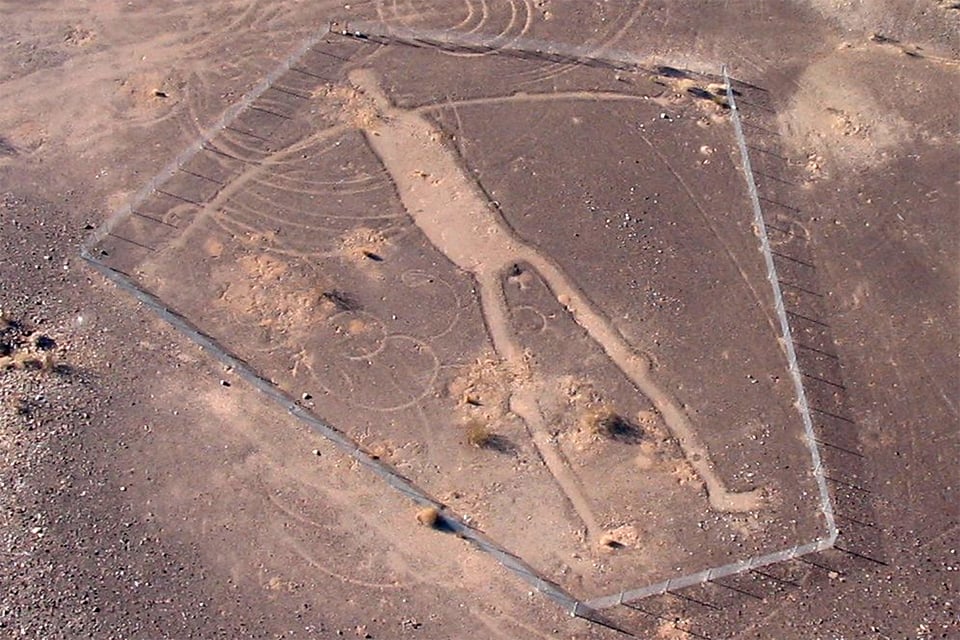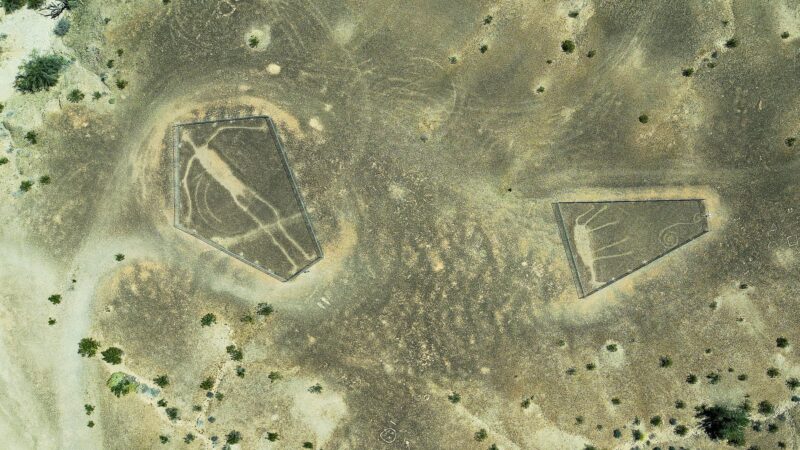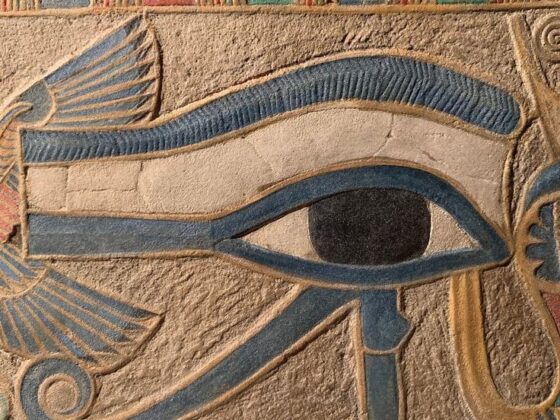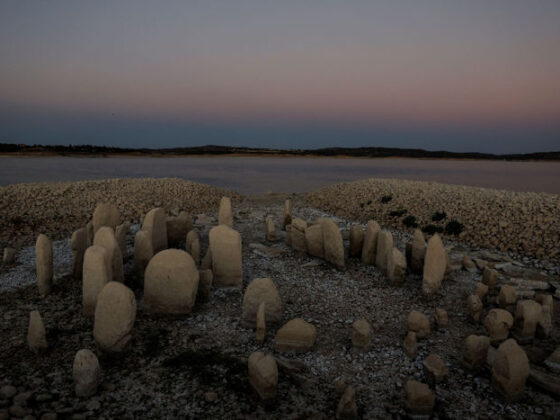The Blythe Intaglios, also known as the Blythe Geoglyphs, are a remarkable group of ancient ground drawings located in the Colorado Desert near Blythe, California. These massive figures, etched into the desert floor, represent an intriguing piece of Native American history.
Created by scraping away layers of darker rocks to reveal lighter soil beneath, the Blythe Intaglios consist of three human figures, two four-legged animals, and a spiral design. The largest human figure measures an impressive 171 feet (52 m) in length, showcasing the scale of these ancient works.

The intaglios remained largely unknown to non-native people until 1932 when George Palmer, a pilot flying between Las Vegas and Blythe, noticed them from the air. This discovery led to subsequent surveys and studies, including work by Arthur Woodward and Malcolm J. Rogers in the 1930s.
While the exact age and creators of the Blythe Intaglios remain uncertain, radiocarbon dating suggests they were created between 900 BCE and 1200 CE. The purpose and meaning of these geoglyphs are subjects of ongoing research and speculation. Some theories connect them to Yuman oral history and cosmology, while others suggest they may have been part of ceremonial practices like the keruk, a mourning ritual.

The Blythe Intaglios are part of a larger group of desert intaglios found in the Colorado Desert, the only known desert intaglios in North America. Their preservation became a concern after increased public interest in the 1950s led to some damage. In response, the Bureau of Land Management erected protective fences in 1974, and the site was added to the National Register of Historic Places in 1982.










